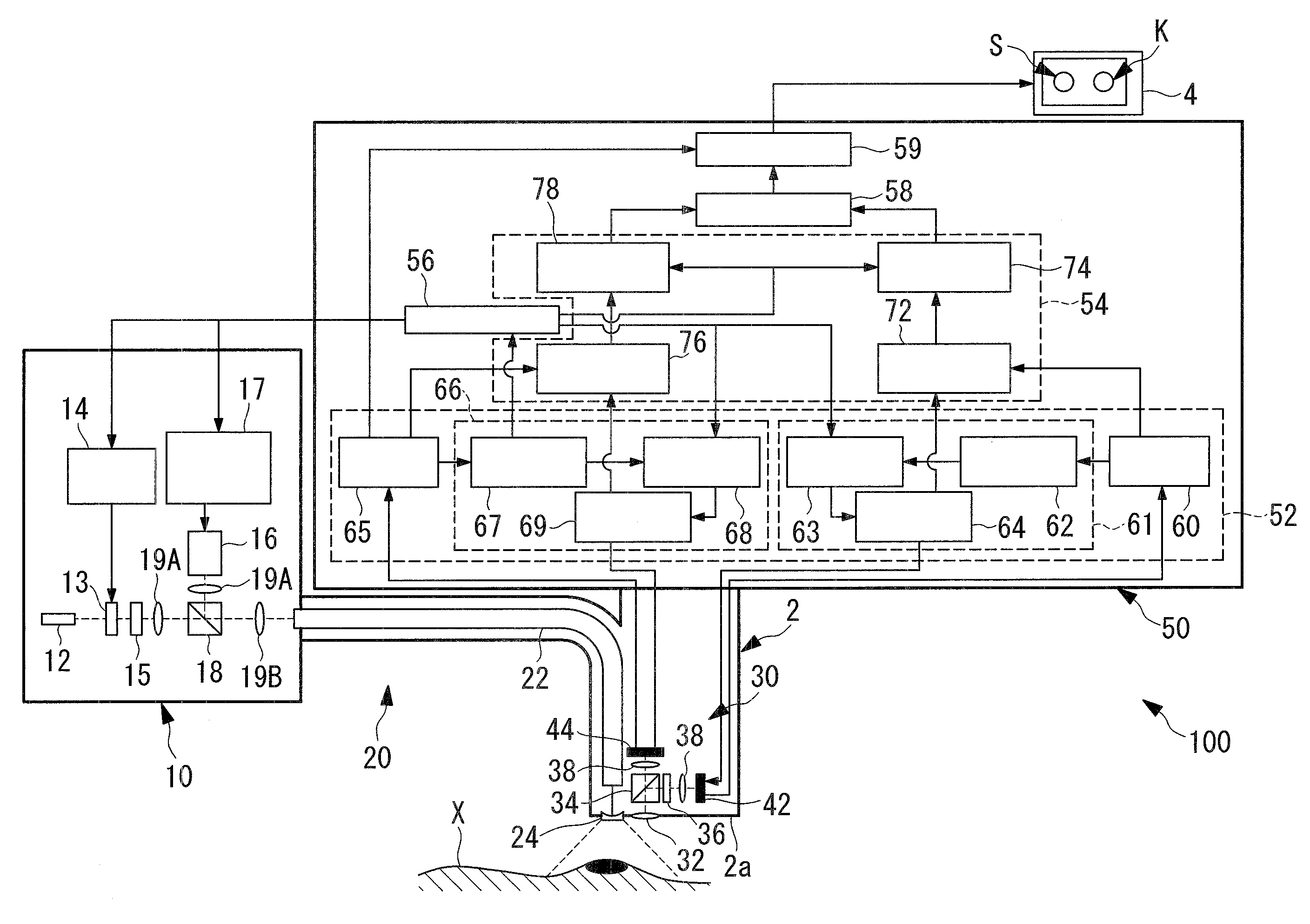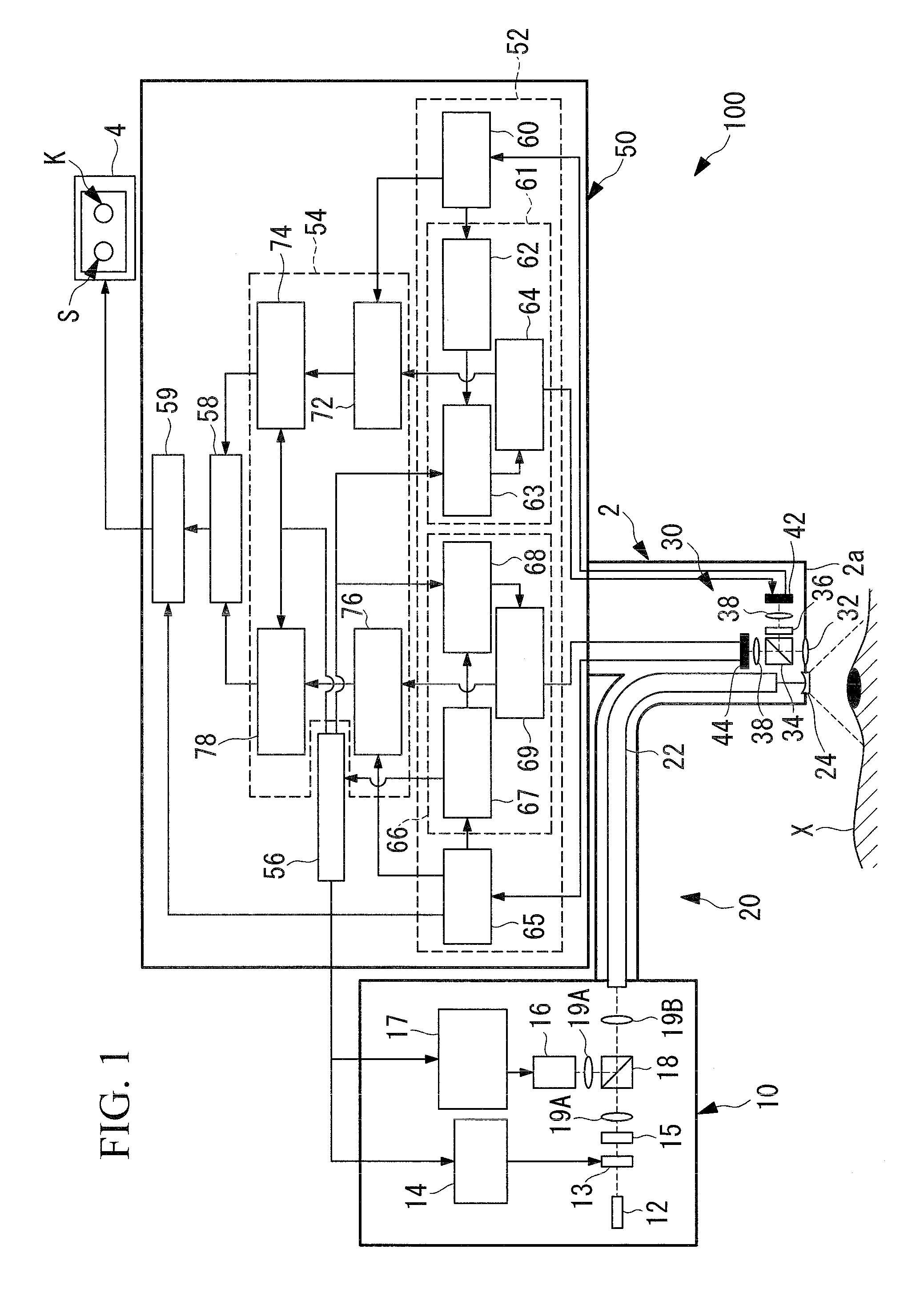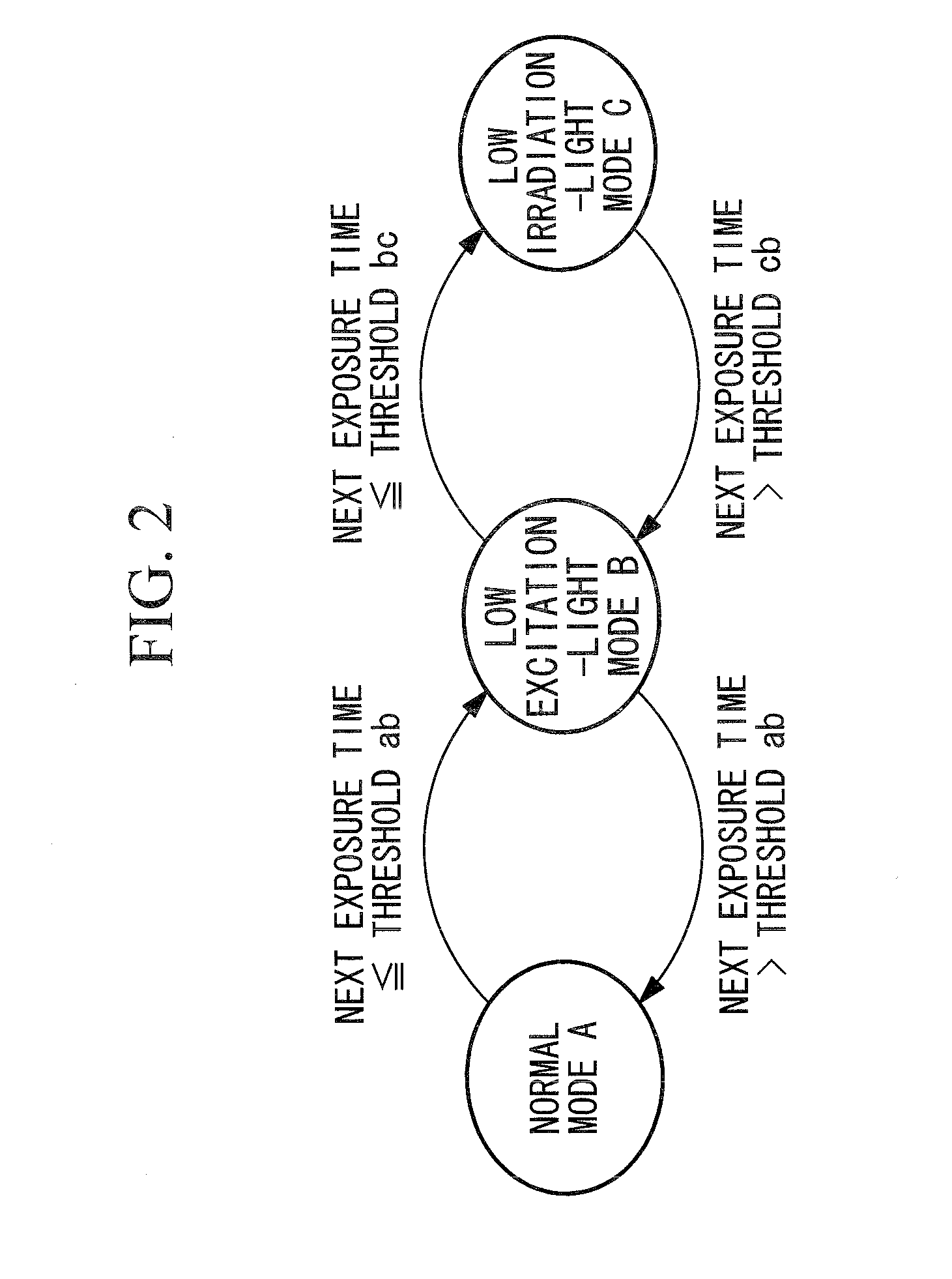Fluorescence observation apparatus
a fluorescence observation and apparatus technology, applied in the direction of fluorescence/phosphorescence, luminescent dosimeters, optical radiation measurement, etc., can solve the problems of inability to observe appropriate brightness of images and dark fluorescence images, and achieve accurate normalization of reference images, enhance quantitative fluorescence images, and appropriate brightness
- Summary
- Abstract
- Description
- Claims
- Application Information
AI Technical Summary
Benefits of technology
Problems solved by technology
Method used
Image
Examples
first embodiment
[0030]A fluorescence observation apparatus according to a first embodiment of the present invention will be described below with reference to the drawings.
[0031]A fluorescence observation apparatus 100 according to this embodiment is a microscope apparatus and, as shown in FIG. 1, includes an elongated insertion portion 2 to be inserted into a body cavity, an illumination unit (illumination section) 20 provided with a light source 10 that outputs illumination light to be emitted from a tip 2a of the insertion portion 2, an image acquisition unit 30 that is disposed in the insertion portion 2 and that acquires image information of an observation target region X, which is a subject, an image processing section 50 that applies arithmetic processing to the image information acquired by the image acquisition unit 30, and a monitor 4 that displays an image processed by the image processing section 50 or other data.
[0032]The light source 10 includes a xenon lamp 12 that emits illumination ...
second embodiment
[0086]Next, a fluorescence observation apparatus according to a second embodiment of the present invention will be described.
[0087]As shown in FIG. 7, a fluorescence observation apparatus 200 of this embodiment differs from that of the first embodiment in that a light source 210 is not provided with the semiconductor laser 16, and the diaphragm control section 14 simultaneously controls the amounts of illumination light and excitation light emitted from the xenon lamp 12.
[0088]Identical reference symbols are assigned to the component parts common to the fluorescence observation apparatus 100 of the first embodiment, and a description thereof will be omitted.
[0089]The light source 210 includes the xenon lamp 12, the diaphragm 13, and a coupling lens 19 that converges illumination light (white light), which includes excitation light emitted from the xenon lamp 12 and passing through the diaphragm 13.
[0090]As shown in FIG. 8, the quantitativeness control section 56 has two control mode...
PUM
 Login to View More
Login to View More Abstract
Description
Claims
Application Information
 Login to View More
Login to View More - R&D
- Intellectual Property
- Life Sciences
- Materials
- Tech Scout
- Unparalleled Data Quality
- Higher Quality Content
- 60% Fewer Hallucinations
Browse by: Latest US Patents, China's latest patents, Technical Efficacy Thesaurus, Application Domain, Technology Topic, Popular Technical Reports.
© 2025 PatSnap. All rights reserved.Legal|Privacy policy|Modern Slavery Act Transparency Statement|Sitemap|About US| Contact US: help@patsnap.com



